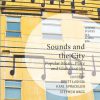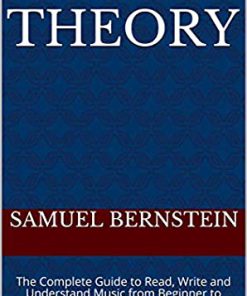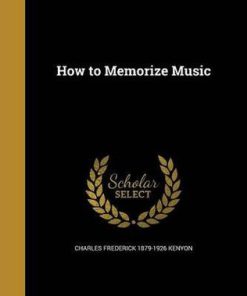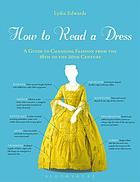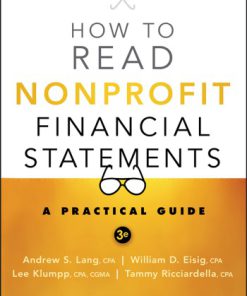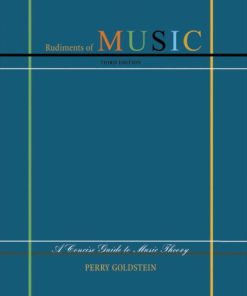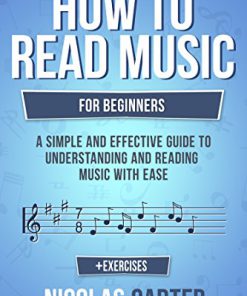How to Read Music A Complete Music Theory Guide to Learn How to Read Write and Hear the Different Aspects of Music from Beginners to Advanced 1st Edition by Carl Jones
$50.00 Original price was: $50.00.$25.00Current price is: $25.00.
How to Read Music A Complete Music Theory Guide to Learn How to Read Write and Hear the Different Aspects of Music from Beginners to Advanced 1st Edition by Carl C. Jones – Ebook PDF Instant Download/Delivery:
Full download How to Read Music A Complete Music Theory Guide to Learn How to Read Write and Hear the Different Aspects of Music from Beginners to Advanced 1st Edition after payment
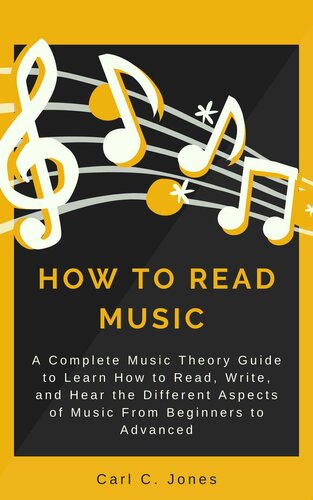
Product details:
Author: Carl C. Jones
A Complete Music Theory Guide to Learn How to Read, Write, and Hear the Different Aspects of Music from Beginners to Advanced
-The Fundamentals of Music
-Basic Notions of Music
-Reading Melody and Harmony
-Reading Counting and Tempo
-Reading Dynamics and Articulation
-How to Read Rhythm
-Reading Chords & chord progression
-How to Compose music
-and much more
Music is an art form of combining different sound notes to express feelings, ideas and emotions by using the elements such as harmony, rhythm, color and melody. The essence of music fulfills a variety of purposes in our daily life: aesthetic pleasure, during ceremonies, religious practices, or as a source of entertainment.
You’re here because you want to make awesome melodies while you probably don’t know much yet about music theory.
This book skims over the most important topics and explains the essential basics that gives you the most profitable results. Make no mistake, you do have to know a couple of important basic topics to have a musical structure to follow.
Throughout this book, the readers will learn about the different methods of reading the various notes of sound. This book aims to develop an interest in the minds of the readers regarding the beauty associated with the different sounds, and also enable them to understand the wide variety of musical compositions available today.
How to Read Music A Complete Music Theory Guide to Learn How to Read Write and Hear the Different Aspects of Music from Beginners to Advanced 1st Table of contents:
-
Introduction
- Why Learn Music Theory?
- The Basics of Music Notation
- Overview of the Book
-
Chapter 1: Getting Started with Music Notation
- The Staff, Clefs, and Notes
- The Musical Alphabet and Its Structure
- Understanding Pitch and Duration
-
Chapter 2: Rhythm and Time Signatures
- The Basics of Rhythm
- Note Values: Whole, Half, Quarter, Eighth, and Sixteenth Notes
- Time Signatures: Understanding Simple and Compound Time
- Counting Rhythms and Syncopation
-
Chapter 3: Key Signatures and Scales
- What Are Key Signatures?
- The Major Scale: Structure and Construction
- The Minor Scale: Natural, Harmonic, and Melodic Minor
- Recognizing and Playing Scales
-
Chapter 4: Intervals and Chords
- Understanding Intervals and Their Relationships
- Major, Minor, Perfect, Augmented, and Diminished Intervals
- Chord Construction: Major, Minor, Diminished, and Augmented Chords
- Triads and Seventh Chords
-
Chapter 5: Reading Music on the Staff
- Reading Notes on the Treble and Bass Clef
- Memorizing the Lines and Spaces
- Understanding Ledger Lines
- Sight-Reading Tips and Practice
-
Chapter 6: Advanced Notation and Rhythms
- Complex Rhythms: Triplets, Dotted Notes, and Tuplets
- Advanced Time Signatures and Polyrhythms
- Reading Ties, Slurs, and Articulations
- Understanding Dynamics and Expression Marks
-
Chapter 7: Harmony and Chord Progressions
- Basic Harmony and Its Function
- Common Chord Progressions (I-IV-V, ii-V-I, etc.)
- Harmonic Analysis and Roman Numerals
- Inversions and Voicings of Chords
-
Chapter 8: Musical Form and Structure
- The Structure of a Musical Composition
- Understanding Phrases, Periods, and Sections
- Binary, Ternary, and Sonata Forms
- Analyzing Classical and Modern Musical Forms
-
Chapter 9: Ear Training and Aural Skills
- Developing Pitch Recognition
- Identifying Intervals, Chords, and Scales by Ear
- Rhythmic Dictation and Sight-Singing
- Practical Tips for Ear Training
-
Chapter 10: Composition and Songwriting
- Basics of Composing Music
- Writing Melodies and Harmonizing Them
- Creating Chord Progressions and Accompaniments
- Tips for Writing Lyrics and Music
-
Chapter 11: Putting It All Together
- Integrating Sight-Reading, Ear Training, and Composition
- Practicing Efficiently: Building Your Musicianship
- Advanced Music Theory Concepts for Further Study
-
Conclusion
- Next Steps in Your Music Journey
- Continuing Your Music Education and Practice
-
Glossary of Terms
- Definitions of Key Music Theory Terms
-
Appendix
- Additional Resources for Music Theory Study
- Recommended Listening and Practice Exercises
-
Index
- Quick Reference for Music Theory Topics
People also search for How to Read Music A Complete Music Theory Guide to Learn How to Read Write and Hear the Different Aspects of Music from Beginners to Advanced 1st:
learn how to read music
how to read music for beginners
app to learn how to read music
apps that teach you how to read music
best app to learn how to read music
Tags:
Carl Jones,Read Music,Complete,Theory,Guide,Learn,Write,Hear,Different,Aspects,Music,Beginners,Advanced 1st
You may also like…
History
How to Memorize Music 1st edition by Charles Frederick 1879 1926 Kenyon 1362724823 9781362724827
Reference - Writing
Arts - Fashion
Politics & Philosophy - Anthropology
Business & Economics - Accounting
Arts - Study & Teaching
Rudiments of Music A Concise Guide to Music Theory Third Edition Perry Goldstein


